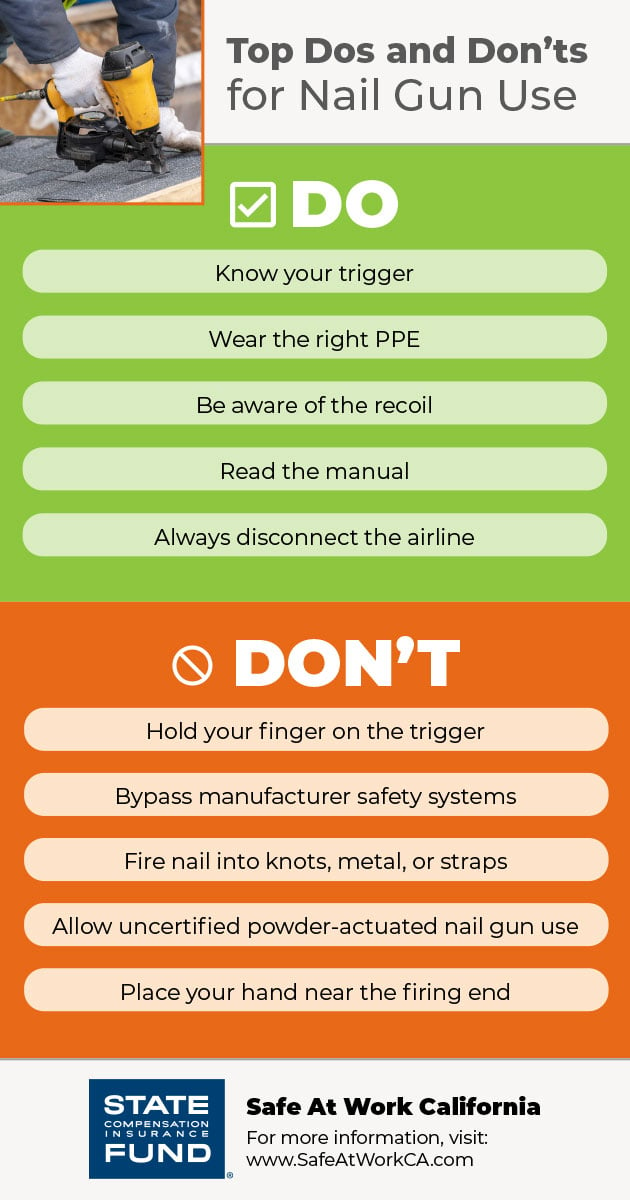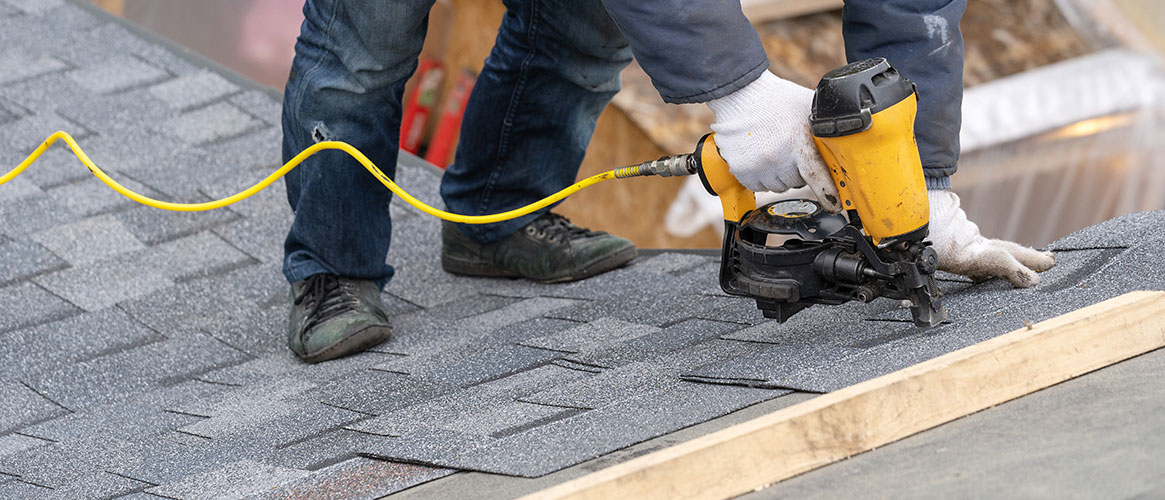Puncture wounds to the hands or fingers are the most common nail gun related injuries in the construction industry. However, when a nail unintentionally discharges or ricochets off something, the entire body can be at risk. In some instances, people have suffered paralysis, blindness, or worse.

Injuries from nail guns send approximately 25,000 construction workers to the emergency room each year. This injury risk can be cut in half by switching to a safer trigger mode on the gun itself, greatly reducing the chances of an unintended nail discharge. Changing the trigger mode combined with some basic safety steps to avoid puncturing your hands and causing ricochets, can reduce the risk even more.
What your employees need to know about nail gun triggers
Almost all nail guns are equipped with different trigger settings. The most popular is the contact tip (or bump fire) method. It’s also the most dangerous.
With bump firing, the user continuously holds down the trigger and once the tip presses against an object, a nail discharges. It is common for workers to continue holding the trigger down when working, even when walking between work areas. Should the user bump into another coworker or trip and fall, a nail could fire unexpectedly and injure the user or someone else nearby. If a user is working in a tight space, the nail gun can strike the worker or a nearby wall during recoil, unexpectedly releasing a nail that could strike and injure the worker.
Alternatively, the full sequential and the single shot trigger modes are safest, because they allow the gun to only discharge one nail at a time. The user must reset the trigger before firing the next nail, so even if the user is still holding the trigger and bumps a wall or coworker, additional nails don’t fire. Older nail gun models may not have this setting. While replacing these older models at your job site isn’t required, it does provide greater safety.
What your employees need to do to use a nail gun safely
Before connecting a nail gun to its power source, the user should set the nail gun to full sequential or single shot mode. With some models, the user can do this by flipping a switch, dial, or lever. In other cases, one trigger might have to be removed and replaced by another. This change alone can help dramatically reduce the injury risk at your worksite.
What to cover at your safety meeting about nail guns
Demonstrate how to enable and use the full sequential or single shot trigger, and discuss why that’s safer than bump firing.
To cut the risk even further, cover these additional safety tips with your team:
- Avoid firing into knots, nails, straps, or other defects in the work material. This can cause a nail to ricochet and strike those working nearby.
- Discharge the tool away from the body and away from coworkers.
- Use proper personal protective equipment (PPE) such as eye protection, steel-toed safety shoes or boots, and a hard hat.
- Keep hands at least 12-inches away from the nailing point at all times.
- Disconnect the nail gun’s power source when clearing jams, performing other maintenance, passing it to a coworker, moving up or down a ladder, and leaving the gun unattended.
When first fired, nails move at a speed of 150 feet per second. So, there isn’t much time to react when something goes wrong. Using a safer trigger mechanism and following the other precautionary steps may require more time to get the job done; but will also help dramatically reduce the risk of injury.

